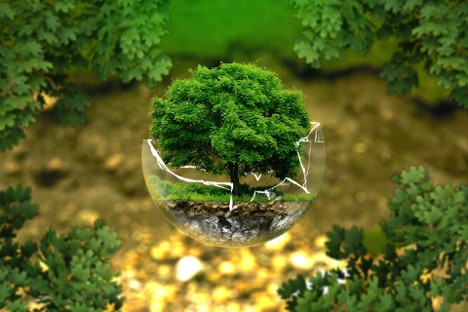Since the dawn of mankind, humans have relied on animal meat for survival. From hunters with spears to big corporations raising animals for slaughter in factory farms. Humans have mastered farming animals for their meat. And for many years we have ignored the negative consequences of its production.
Hundreds of millions of animals are killed every year to sustain our need for food. Based on recent statistics, the number of slaughtered animals has exceeded the number of people that have lived on the planet. Meat eater or not, it’s obvious that animal food production consumes a huge amount of our natural resources. It’s one of the major reasons for global warming and climate change yet it’s the least talked about.
According to U.N Food and Agriculture Organization (FAO), industrialized agriculture is responsible for a significant portion of land degradation, biodiversity decline, and air pollution on our planet.
Did you know that it takes 15,000 liters of water to produce a single kilogram of beef?
Did you know that industrial meat is the biggest cause of deforestation around the world?
Farmers have obliterated forests to clear space for cattle and for growing animal feed.
If only people eat less meat or removed it entirely from their diet, we could see a lot of positive changes to our environment.
3D Food Printing and the “Meatless” Diet
The concept of a meatless diet has been around the world for decades. People who do so tend to use other alternatives to meats by recreating its taste with the use of soy, peas, rice, and beans. However, no matter how they resemble meat in taste, their textures don’t resemble the real deal.
This is the problem 3D-printing green technology plans to solve.
Over the next decade or two, animal meat consumption will drastically change.
Scientists predict that more than 60% of products we call “meat” will no longer come from slaughter but will consist of 100% veg with a taste similar to meat or derived from cloning animal cells.
In fact, the consumption of fake meat has grown since the pandemic. Since thousands of meatpacking facilities have closed down because of Covid-19, there is a low supply of meat in the world. In response to this, an increase of imitations of chicken tenders and other plant-based meat alternatives have been available in food markets and restaurants.
How Can 3D Meat Help The Environment? Is it Sustainable?
First, there will be less use of resources needed to run farms. There will be a 96% greenhouse gas emissions reduction as large meat factories close down. We wouldn’t have to turn forests into farms to feed our population. People wouldn’t have to worry about the negative impact of meat productions starting from fertilizers to packaging.
It seems like a wonderful solution to reduce the negative impacts of factory farms.
But, the important question is: is it sustainable?
Can it provide food at a lower cost?
Can it be traded and distributed efficiently?
Can it make a difference?
According to experts, it is possible to replace all meat with cultured 3-D printed meat. But it isn’t easy. There will always be regulatory, political, and funding issues. The livestock industry will probably be against it since it will take away thousands of jobs. It will not be successful right away but scientists believe it could help satisfy additional demand.
By 2050, the world population is expected to reach 9 billion. To feed this amount of people without destroying the planet, we need to rethink our ways in order to have a better and more sustainable food production.
How edible is Lab-Grown Meat?
Growing food in laboratories will be a solution we might not want but need in the future. Researchers from several startups are now finding ways to create animal meat without “killing” an animal. Using biotechnology, scientists can now create 3-D printed meat from muscle tissues from animal stem cells.
These cells are then injected with nutrients and with an edible scaffold to support their development. When they grow, they can become food such as sausages and burgers.
But will people eat 3D printed meat? 3D printed meat will taste and look like real meat and people won’t probably know the difference. It will not be appealing to committed meat-eaters at first, but it will soon be part of our diet.
Conclusion
The consumption and production of 3-D printed meat alone isn’t going to save the environment, but it’s a huge step into driving people to eat more sustainably. With the concept in the public, there will be more discussion on the negative effects of agriculture and food production in our environment. People will explore alternative and better options for farming.




